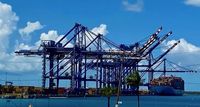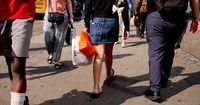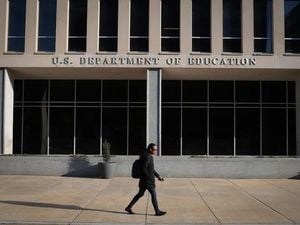Consumer prices in the United States rose by 2.7% in July 2025 compared to a year earlier, marking a second consecutive month of steady inflation and bucking expectations of a sharper increase as President Donald Trump’s tariffs took hold. The latest data from the U.S. Bureau of Labor Statistics (BLS) and corroborated by multiple sources, including ABC News, Al Jazeera, and NBC News, reveal a complex picture of an economy grappling with the dual forces of trade policy and persistent price pressures.
The 2.7% annual increase in the Consumer Price Index (CPI) matched June’s reading and fell short of the 2.8% anticipated by economists polled by Dow Jones, as reported by Al Jazeera. On a monthly basis, prices ticked up 0.2% in July, a slight slowdown from June’s 0.3%. The core inflation measure, which excludes volatile food and energy prices, climbed to 3.1%—its highest since February—underscoring that underlying price pressures remain stubbornly elevated, according to NBC News.
Housing costs, as the BLS noted, were the primary driver of inflation last month. Shelter expenses rose by 0.2% in July, while medical care services surged 4.3% year over year. Meanwhile, categories like airline fares saw a 4% increase compared to last year, and car insurance and housing continued to exert upward pressure on the index. On the flip side, grocery prices dipped by 0.1%, and the cost of eating out rose by 0.3%. Energy costs fell by 1.1% over the past 12 months, with petrol prices dropping 2.3% and fuel prices down 9.5% year over year, according to Al Jazeera and Placer.AI analysts.
Eggs—a symbol of inflation’s bite in recent years—offered a rare reprieve, with prices dropping 3.4% from June to July. However, they remain more than 16% above their level a year ago, ABC News reported. Apparel costs declined 0.2% from July 2024, while furniture and imported goods such as tools, hardware, car parts, and footwear saw price increases due to tariffs, as highlighted by Al Jazeera.
Tariffs imposed by the Trump administration have played a significant role in shaping these trends. According to NBC News, the pass-through from tariffs to consumer prices has so far been limited, but economists warn that this effect is likely to intensify as inventories stockpiled before the tariffs were enacted are gradually depleted. Seema Shah, chief strategist at Principal Asset Management, noted, “There is some sign of tariff pass through to consumer prices but, at this stage, it is not significant enough to ring alarm bells.” She cautioned, however, that “the tariff-induced boost to inflation is likely to grow over the coming months.”
Jonathan Gold, vice president for supply chain and customs policy at the National Retail Federation, told Global Port Tracker, “Tariffs are beginning to drive up consumer prices, and fewer imports will eventually mean fewer goods on store shelves. We need binding trade agreements that open markets by lowering tariffs, not raising them.”
The impact on trade flows and supply chains has been profound. The nation’s largest ports handled 1.96 million containers in June, up 0.7% from May but down 8.4% from the previous year, according to Global Port Tracker. July imports surged to an estimated 2.3 million containers—a 17.3% jump from June—as retailers rushed to bring in goods ahead of new tariffs, but this was still 0.5% lower than July 2024. Projections indicate that import cargo volume will be down 5.6% by the end of 2025 compared to last year. The second half of 2025 is expected to see sharp declines in import volumes, with forecasts of year-over-year drops ranging from 18.9% to 21.1% between September and December.
R.J. Hottoway, an analyst with Placer.AI, explained that retailers have so far managed to keep a lid on price increases by selling through inventory brought in before tariffs took effect. However, over 70% of retailers surveyed by Enable plan to raise prices to offset tariff impacts, and 37% admit it takes months to implement such changes. Andrew Butt, CEO of Enable, pointed out, “The lag between tariff updates and implementing price changes creates a window where competitors with faster pricing capabilities can capture significant market advantage.”
In the private sector, major companies like Walmart and Procter & Gamble have already announced price hikes in response to tariffs. The effects are also visible in import-sensitive sectors, where prices for items like car parts, hardware, and footwear have edged up, while sectors less reliant on imports have seen more subdued inflation, as MIT’s Daniel Hornung told Al Jazeera.
President Trump, meanwhile, has kept up pressure on the Federal Reserve to lower interest rates. In a social media post, he declared, “The Economy is BOOMING under ‘TRUMP’ despite a Fed that also plays games, this time with Interest Rates.” He has also publicly urged Fed Chair Jerome Powell to act, writing, “Jerome ‘Too Late’ Powell must NOW lower the rate,” and boasting, “the economy is sooo good that we’ve blown through Powell and the complacent Board.”
The president’s stance comes at a precarious moment. The August 1 jobs report revealed the slowest pace of hiring since 2020, raising alarm bells about a possible recession. GDP growth averaged just 1.2% in the first half of 2025, a sharp slowdown from 2.8% in the same period last year. The combination of persistent inflation and weakening job growth has led analysts to warn of the risk of “stagflation,” a scenario in which the economy slows while prices continue to rise—a major headache for the Federal Reserve.
The Fed is widely expected to consider lowering interest rates at its September meeting, with investors placing the odds of a rate cut at 86%, according to the CME FedWatch Tool. Yet, as Bank of America economists cautioned in a recent note, “In a stagflationary environment, it is dangerous to cut without clear evidence that inflation has peaked.” Fed officials remain divided, with some arguing that the inflationary impact of tariffs is likely to be temporary, while others, including Chair Powell, warn that the effects could be more persistent.
The political drama surrounding economic data has only added to the uncertainty. On August 1, President Trump fired BLS Commissioner Erika McEntarfer, accusing her without evidence of data manipulation after the release of a weak jobs report. He has since named E.J. Antoni, chief economist at the Heritage Foundation, as her replacement. The move has raised concerns among economists and policymakers about the integrity of federal economic statistics, but the BLS has stated that no changes to its methodology have been made.
As the U.S. heads into the fall, the full impact of tariffs on prices and the broader economy remains to be seen. With inventories dwindling and trade tensions unresolved, consumers and businesses alike are bracing for what could be a bumpy ride in the months ahead.





